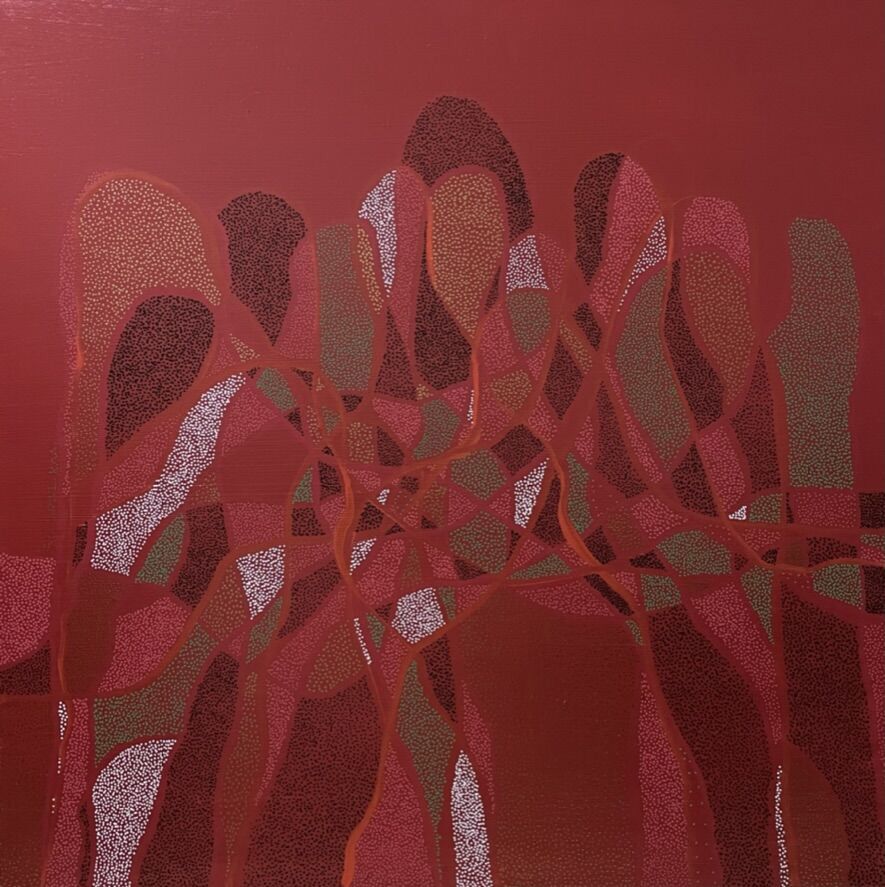Introduction: More Than Decoration, It’s Energy
Art is often the final touch in interior design, but in truth, it can be the soul of a space. The abstract oil painting Reflecting the Self by OkArty is one such piece—it doesn’t merely decorate a wall, it creates an atmosphere. It sets a tone.
In the words of Georgia O’Keeffe: “I found I could say things with color and shapes that I couldn’t say any other way.” This is especially true in interior design, where color, shape, and movement in abstract art like this directly influence the energy of a room.
Abstract Art and Emotional Atmosphere
Every room has a mood. That mood can be consciously designed—or left to chance. When you introduce a work like Reflecting the Self, you’re making an intentional choice to infuse the environment with emotion, depth, and reflection.
This particular artwork features layered brushstrokes and expressive textures that feel organic yet structured. Its presence in a space doesn’t shout—it hums. It builds a quiet current that runs through the room, encouraging guests and occupants to pause, breathe, and consider.
Color as a Sensory Anchor
The palette of Reflecting the Self is both neutral and emotional—there are subtle blues, warm earth tones, and whispering greys that make it compatible with a wide range of decor styles. But beyond coordination, these colors anchor us emotionally.
Psychologically, blue tones are often linked to calmness and depth. Earth tones connect us to nature and memory. Grey can represent neutrality, complexity, or balance. In a modern minimalist home, this palette adds warmth. In a maximalist space, it provides visual breath.
Creating Focal Points Without Noise
One of the biggest challenges in interior design is creating strong focal points without overpowering a space. Abstract paintings like Reflecting the Self strike this balance perfectly.
Without recognizable objects or scenes, the painting gives the eye somewhere to rest—but also to roam. This makes it perfect for entryways, meditation corners, or creative workspaces. It captures attention softly and holds it without interruption.
As Mark Rothko said, “The people who weep before my pictures are having the same religious experience I had when I painted them.” This emotional presence is powerful—yet never pushy.
Versatility Across Design Styles
A major strength of this artwork lies in its stylistic flexibility. Whether you’re decorating a contemporary loft, a bohemian den, a Scandinavian minimalist flat, or a wabi-sabi-inspired tea room, Reflecting the Self blends in—while standing out.
Its abstraction makes it open to interpretation, allowing different rooms to “read” the painting in different ways. In one space, it might suggest serenity. In another, transformation. This flexibility makes it a smart investment not just for now—but for years to come.
Personal Connection in Public Spaces
While perfect for private homes, Reflecting the Self also thrives in professional or shared environments—art galleries, counseling centers, high-end cafes, or boutique hotels.
In these spaces, where diverse people pass through, the abstract nature of the painting avoids specific messaging. Instead, it offers emotional resonance that everyone can relate to. It gives people a moment of silence in an often chaotic world.
Conclusion: Painting with Presence
The best design doesn’t just impress—it lingers. Reflecting the Self is a painting that lingers not just in the air, but in the viewer’s mind. It’s not just a background piece—it’s a collaborator in the emotional rhythm of a space.
To quote architect Le Corbusier, “Space and light and order. Those are the things that men need just as much as they need bread or a place to sleep.” Abstract oil paintings like Reflecting the Self are what give that space its human heart.
